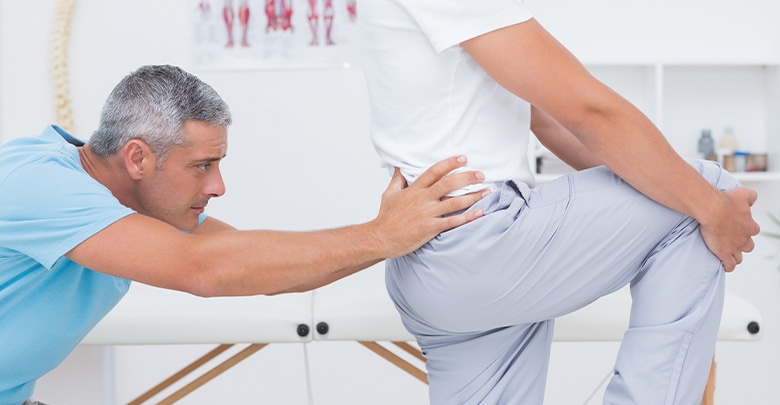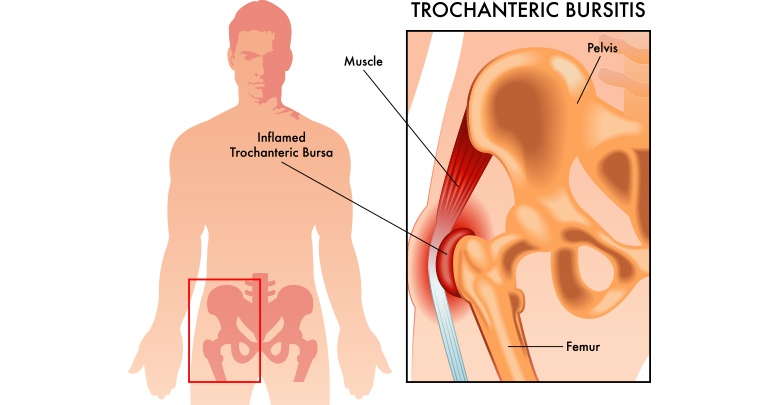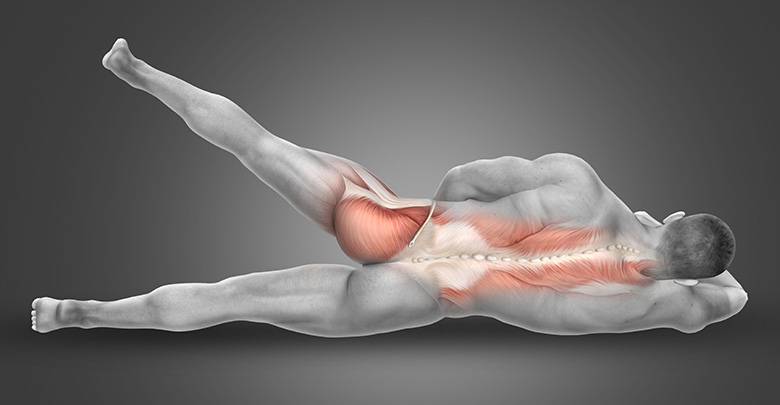Treating bursitis of the hip
It can be difficult to know what is best when treating bursitis of the hip. Read more about the various options

It can be difficult to know what is best when treating bursitis of the hip. Read more about the various options
Get the right diagnosis
First it is important to know what condition you actually have. You can read more about the types of hip bursitis in this article, and also about the common causes.
USE the OMH exclusive code "HEALTH15" to Save 15%
Bursitis of the hip is a common cause of hip pain, but there are other conditions such as osteoarthritis, stress fractures, tendinopathy and muscle strains, which may present with very similar symptoms. We suggest that you see a good doctor or physiotherapist who can do the necessary tests to diagnose you correctly. You may also need x-rays, an MRI or some other investigations in order to rule out other conditions, and confirm your diagnosis. Sometimes these conditions may also exist together!
Treating bursitis of the hip

There are various treatment options, which may be used together to give you the best results:
- NSAIDS – doctors often prescribe non-steroidal anti-inflammatory drugs, which help to reduce the symptoms. Your doctor will advise you on their use, and possible side effects
- Activity modification – you may need to modify your activities for a period of time, to allow the inflammation in the bursa to settle down. For example not sitting for too long; walking with a crutch if it is really severe; sleeping with a pillow between your knees and with the affected side on top. You may need to do an activity such as swimming or water aerobics, rather than running or walking. Speak to a physical therapist for advise as to what exercise would be better for you, if your current activities are aggravating your condition.
- Gentle stretching – it is important to stretch the tight muscles, which aggravate the bursitis. Check out this great exercise video, which has physio approved stretches and exercises appropriate for hip bursitis. You may also want to start a gentle Yoga class, but be sure to discuss your condition with your instructor, and avoid any movements or stretches, which cause too much discomfort or pain
- Physical therapy, massage and foam rolling – there are often severe trigger points in the muscles around the inflamed bursa. A physiotherapist, or qualified massage therapist can help to relieve these tender points in the muscles through trigger point therapy, dry needling, acupuncture, and electrotherapy. A physiotherapist can show you how to stretch, strengthen, and use a foam roller or small ball in order to do self-massage to help loosen up the tight muscles and fascia around the hip.
- Strengthen the stabilising muscles of your core and pelvis – this is critically important. If your deep tummy muscles, and the muscles around the hip area are not working properly, any activities – and even your walking and movement patterns – may constantly aggravate the sensitive bursa. You can do these physio-approved exercises, which will help to strengthen all the right muscles.
- Pilates is also a wonderful way to strengthen these deep tummy and gluteal muscles.
- Correct leg length difference – if you have one leg shorter than the other, it may be necessary to see someone who can make an insert for your shoe in order to correct the leg length difference and improve the way your hips and pelvis move
- Cortisone injections – sometimes a doctor may inject the bursa with a corticosteroid and some other medications such as local anaesthetic. This may help to reduce the inflammation in the bursa. Sometimes repeated injections may be necessary, but unfortunately sometimes the injection does not work. It is still important to address the underlying muscle weakness and tightness, to hopefully prevent it re-occurring
- Weight loss – losing weight means less pressure in all the structures around the hip joint. Weight loss also then improves how you walk. A better gait pattern (way of walking) means less irritation of the bursa. Read this great article on Motivation! Weight Loss is Miraculous for this with Osteoarthritis
- Surgery – occasionally if all other methods for treating hip bursitis have been tried and have failed, an orthopaedic surgeon may perform surgery to remove the bursa. This can also be done arthroscopically.
Further resources and information about hip bursitis
You can get started with these gentle physio-approved exercises. There is also a downloadable PDF for easy reference.
OhMy.Health has a wealth of articles about
- the causes of hip bursitis
- the different types
- free physio approved bursitis exercise video
- free downloadable exercises (as shown in the video) you can do daily. Find them in the Resources Section.
References
- Nurkovic J, Jovasevic L, Konicanin A, Bajin Z, Ilic KP, Grbovic V, Skevin AJ, Dolicanin Z.Treatment of trochanteric bursitis: our experience. J Phys Ther Sci. 2016 Jul;28(7):2078-81. doi: 10.1589/jpts.28.2078. Epub 2016 Jul 29. PubMed PMID: 27512268; PubMed Central PMCID: PMC4968510.
- Frank H. Netter, Atlas of Human Anatomy, International Edition, Elsevier Health Sciences, London
- Neuromusculoskeletal Examination and Assessment, 4th Edition, Churchill Livingstone, 2011